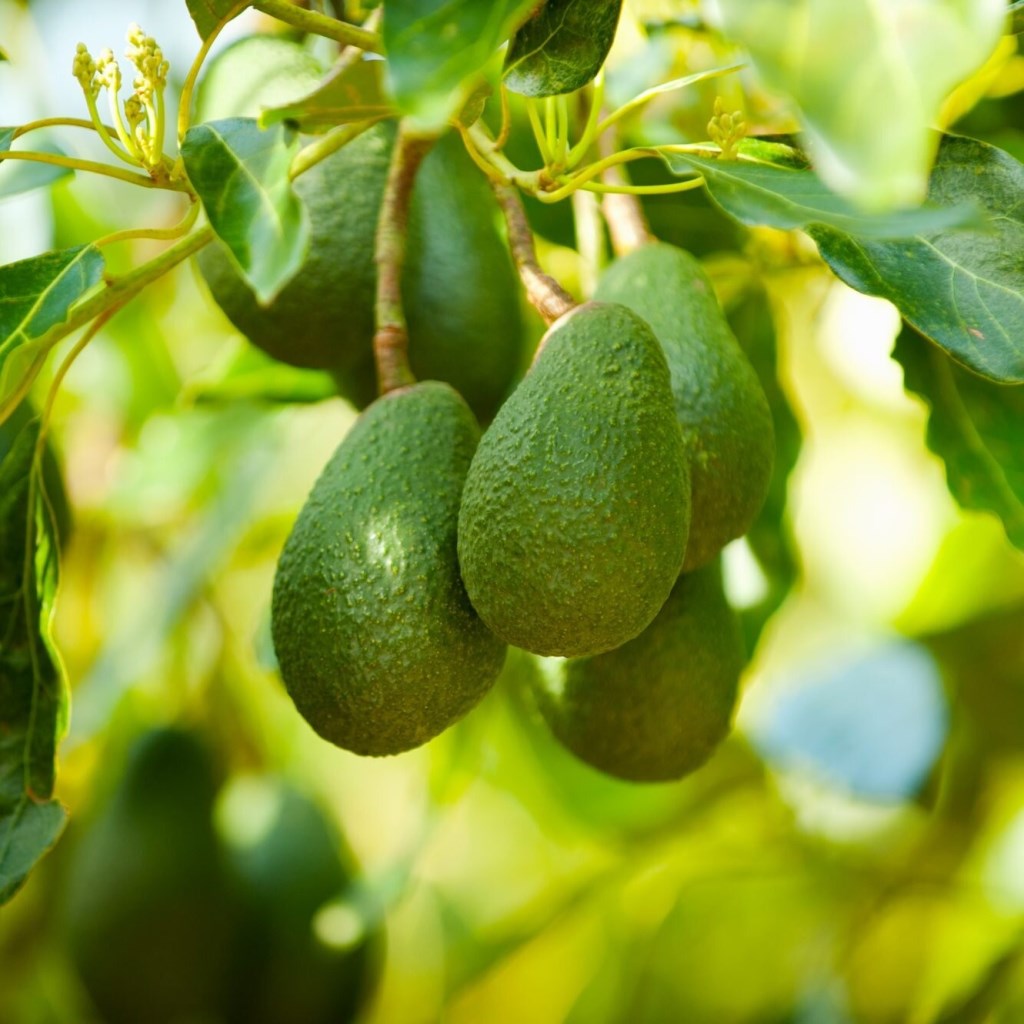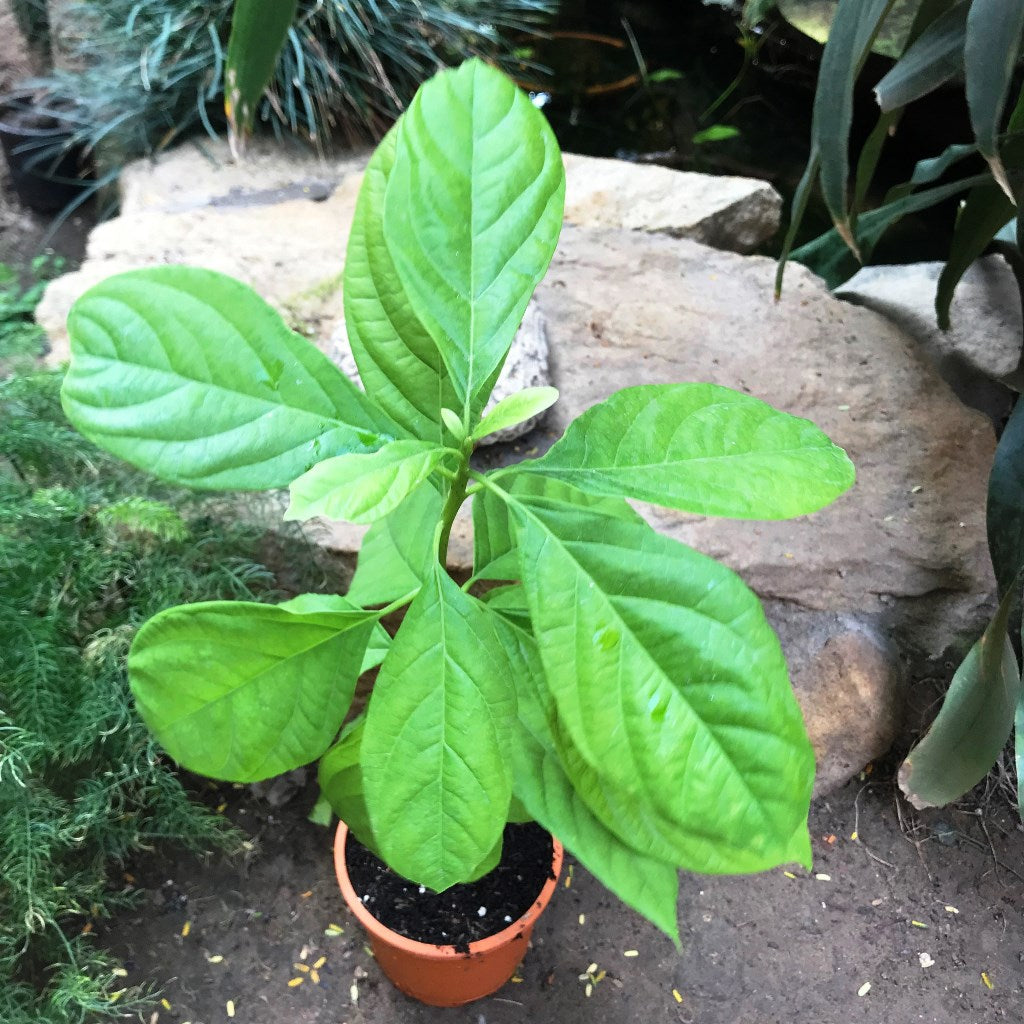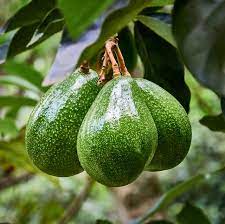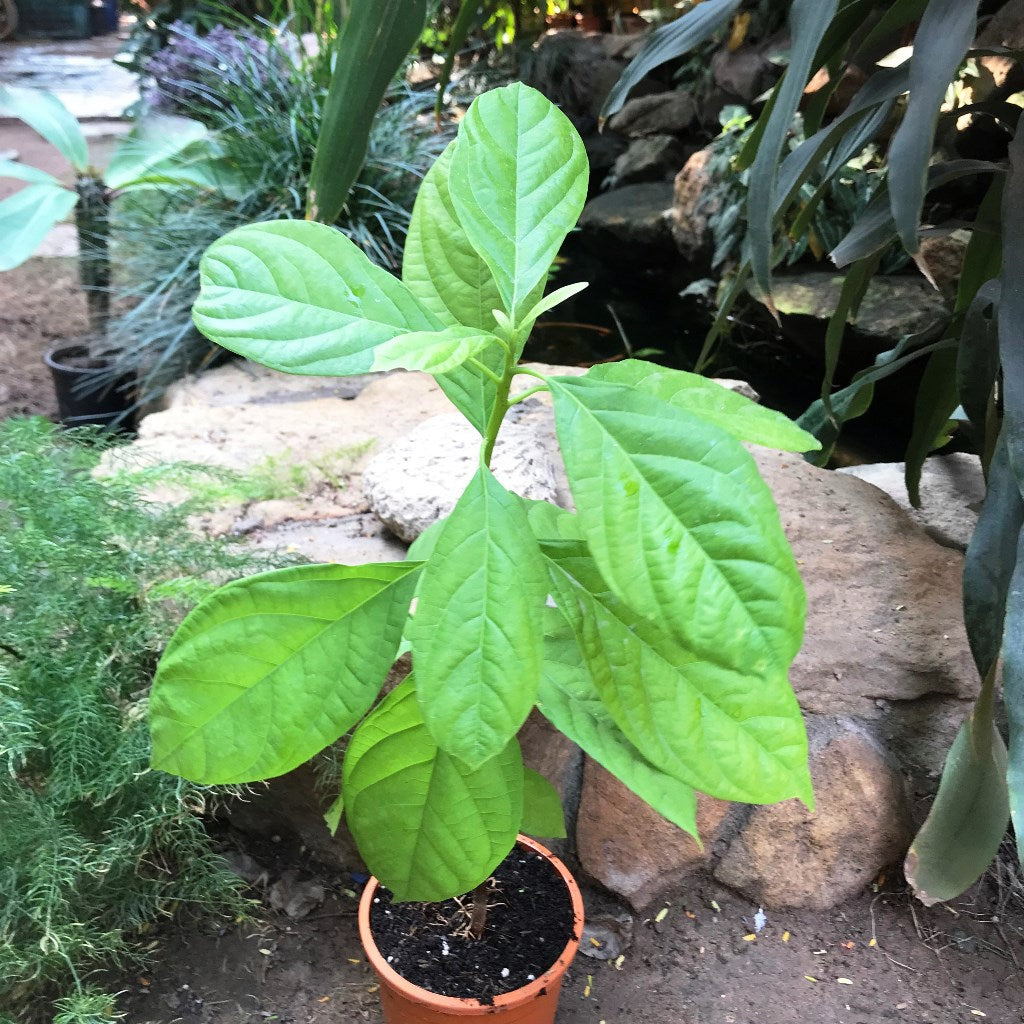Avocado Pear
Family
Lauraceae
Origin
Mexico
Description
Avocado is an broadleaf evergreen fruit tree. Avocado leaves are large, dark, and glossy green above with a lighter shade underneath & are 4–12 inches in length. Mature tree grows upto 30 to 60 ft. in the landscape,potted plants can be pruned to remain small. This gives them a very tropical look. Their canopy is generally very dense, providing cool shade.
The small greenish flowers are borne in dense inflorescences and lack true petals. The flowers have nine stamens, arranged in three series, and a one-celled ovary.
Environment
Choose a location where there is plenty of sun exposure and well-drained soil when planting avocado trees. Full sun is a must for avocado. Try to choose a location that is protected from strong winds. Established trees are very hardy, but a tree that remains waterlogged for as little as 48 hours can die, even if it is quite mature.
Soil should be good quality and free draining. Improve average soil with quality compost before planting. If you have clay soil, create a large planting mound above the clay. Avocados will tolerate soil from slightly acid to slightly alkaline. Anywhere from pH 6 to 7 is ideal.
Newly planted trees may need water two to three times per week their first year. Mature avocado trees need water equal to about 2 inches of rainfall or irrigation each week during summer.
Fertilize them regularly in spring and summer with a balanced granular fertilizer. Fertilizer applications require the right balance of minerals because the amount of each mineral in leaves, the flesh and seed of fruit, and flowers are different. Thus, some minerals are required in greater amounts than others. Very simply, avocados need the right amounts of Nitrogen and Phosphorous for healthy metabolism, Potassium and Zinc in the fruit, Calcium for good structure, Magnesium for good photosynthesis capacity, and Boron, Iron, and Manganese for good health.
Landscape Use
Good for an Avenue plant.






















